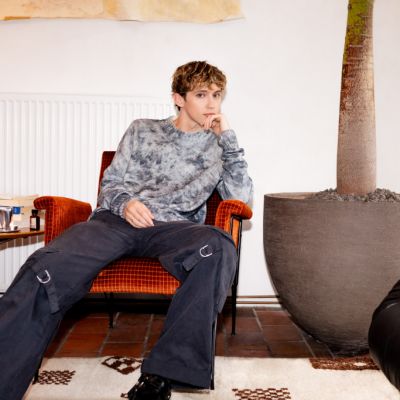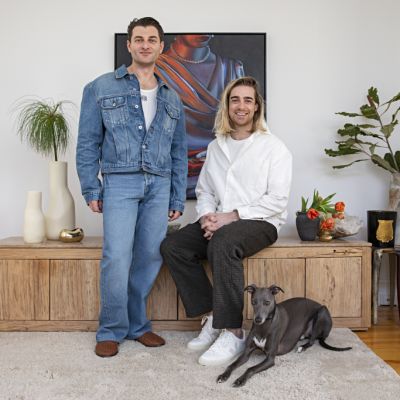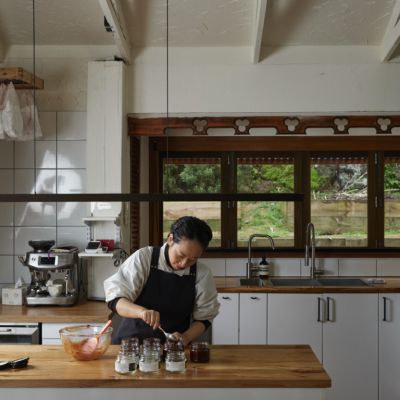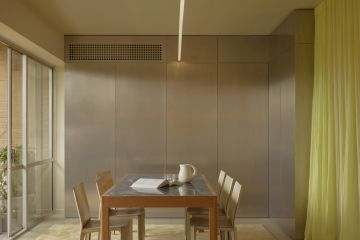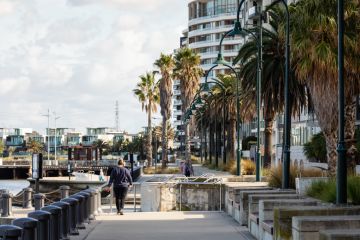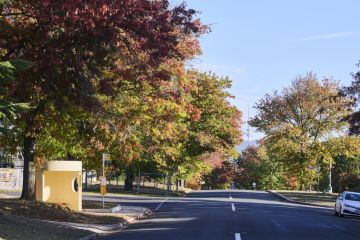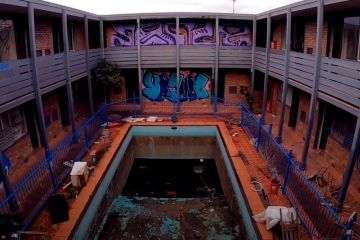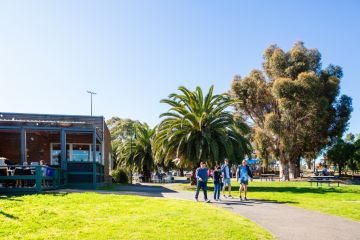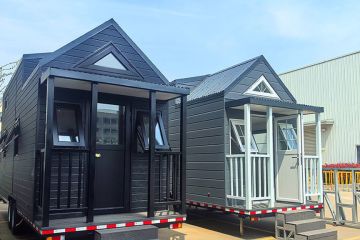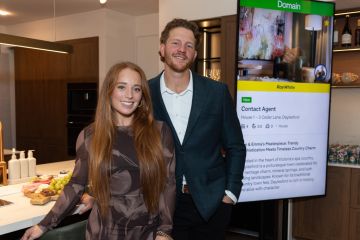'Living with the pieces': Caro Pattle's home studio in Brunswick is key to her art
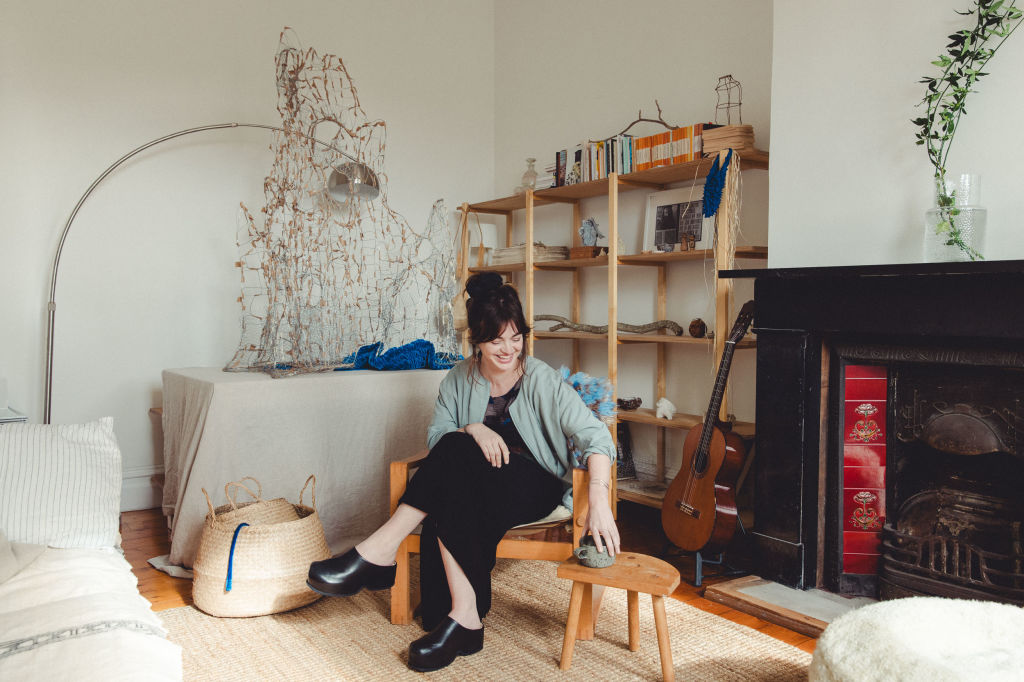
Velvet has a life of its own. This is what New Zealand-born Melbourne-based artist Caro Pattle loves most about her medium of choice. The texture gives way to lots of interesting properties. “Velvet reflects light in various ways and almost absorbs it entirely. It also absorbs sound in the same way,” she tells Broadsheet. “Velvet is like a big invitation to touch, it draws people in and they’re very curious about it.”
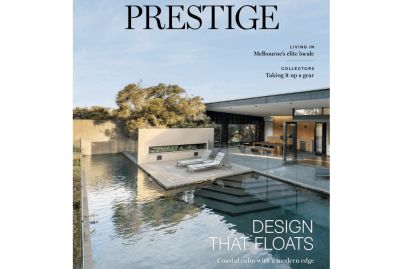

Pattle’s work sits at the intersection of craft and material innovation. She’s become known for knotting velvet yarn to create dense, handcrafted objects that often represent urns or other vessels. Galvanised steel frames create a skeleton of sorts for textiles to be woven and wound around as they come into their own.
There’s a deep connection to organic and geological structures in Pattle’s works. References to chrysalides, stalagmites and stalactites, rhizomatic root systems and Neolithic artefacts pepper her artist statements. Viewers are often confronted by a sense of gravity defied – challenged to question what they’re actually looking at.
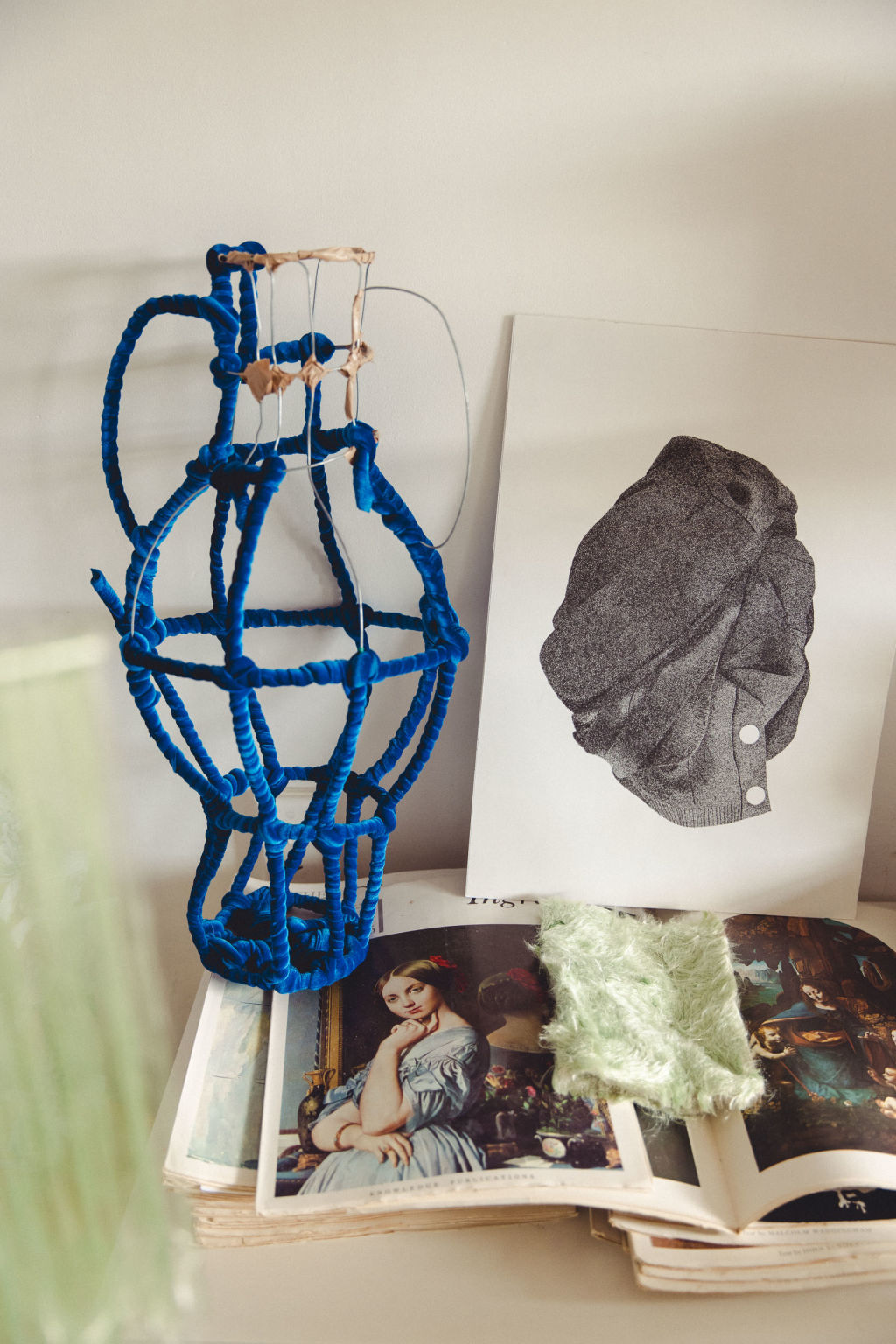
“When I’m making pieces, there’s almost an imaginary world or scenario that I’ve created around the piece in my mind,” she says. “But I’m happy for people to be drawn into their own understanding, to find their own story.” However her audiences choose to understand her work, there’s no denying that Pattle’s curiosity for material and form leeches its way into their experience.
With a catalogue that spans large-scale public art installations and small, indoor objects made to be perched on a shelf, Pattle’s process involves a lot of experimentation. “Some processes are so time intensive that you can only do small pieces,” she says. A basket that isn’t much bigger than the size of an orange can take almost three months to complete. “Whenever I make a piece, I want it to be its own self. And some things are meant to be small.”
Right now, Pattle is working on a vessel that’s so large it’s taken over her living room because it’s impossible to fit through the studio door.
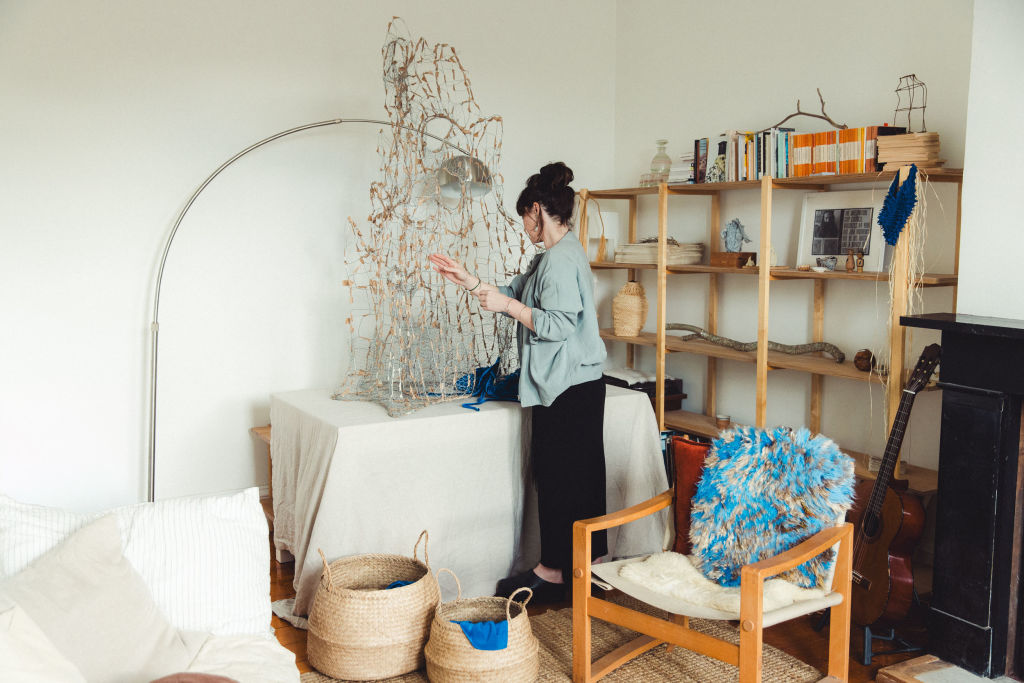
Wool, silk, cotton, alpaca, linen, nylon and acrylic – Pattle’s mix of materials reflects a mission to muddle the division between organic and fabricated, real and contrived. But there’s a common thread of pleasure and play that unites the somewhat eclectic elements in her practice.
Most of Pattle’s works exist in a single colour, allowing the texture of the material to be the focus. A deep cobalt blue has become the signature of her knotted works. You’ll also find more muted hues and earthy greens on pieces in various states of completion in her studio. “I often wear black and I’m constantly covered in fluff … it’s a terrible idea for a textile artist,” she laughs.
Education has been an important part of Pattle’s growth as an artist. She graduated from a Bachelor of Textiles at RMIT in 2019, having previously completed studies in Fine Arts. “It took me a long time to be comfortable with just being an artist – if I was to give advice to anyone, it would be to give it time and it will work itself out,” she says. “I studied for a long time and didn’t exactly end up with the career that I was imagining. But it all kind of made sense in the end and each step has fed into the concepts I’m now working with.”
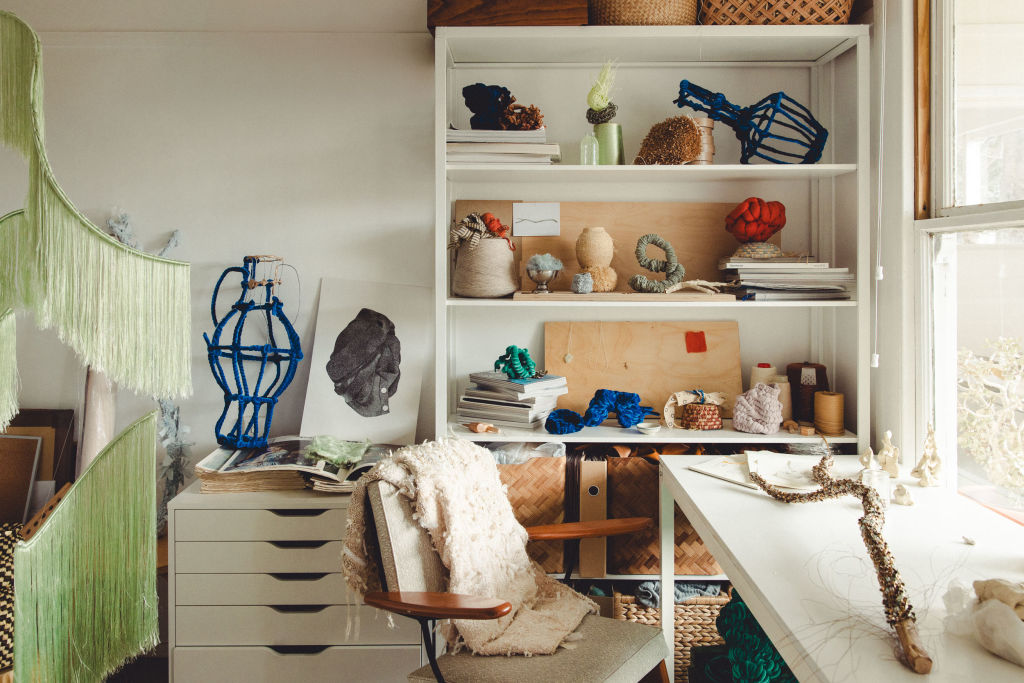
Pattle’s studio looks over a garden, just out the back door of her home in Brunswick. She likes to ease into each day, and often starts out by reading to get her creative spirit going. “When I’m in the studio, there’s excitement and optimism – the process is really invigorating. I find living with the pieces that I make and being surrounded by them in the studio will lead me into the process. I don’t often go in with an exact plan.”
Forever focused on improving her craft, Pattle never makes the exact same item twice. And while there might be similarities between pieces, every element developed in her studio is unique.
Pattle will listen to audiobooks or podcasts as she works. And she’s learnt the importance of taking regular breaks to combat the physicality of her practice. “It’s really easy to underestimate how much time something will take. And if you’re pushing your body to get it done, you can do yourself some harm,” she says.
Mental breaks are important, too. “It’s really easy to feel like you have to constantly feed your creative output, but that’s honestly when I start to get a bit stuck”. Walking around an exhibition, going to the park or even taking a tram ride can help to reset her brain.
“I recently started to play the drums and I’ve actually got a drum kit in my studio now. I’m not very good at it, but it’s a great way to unwind and use my mind and body in a different way.” Taking her dog Shuggie for a walk is another good way to stretch her limbs and change her mindset.
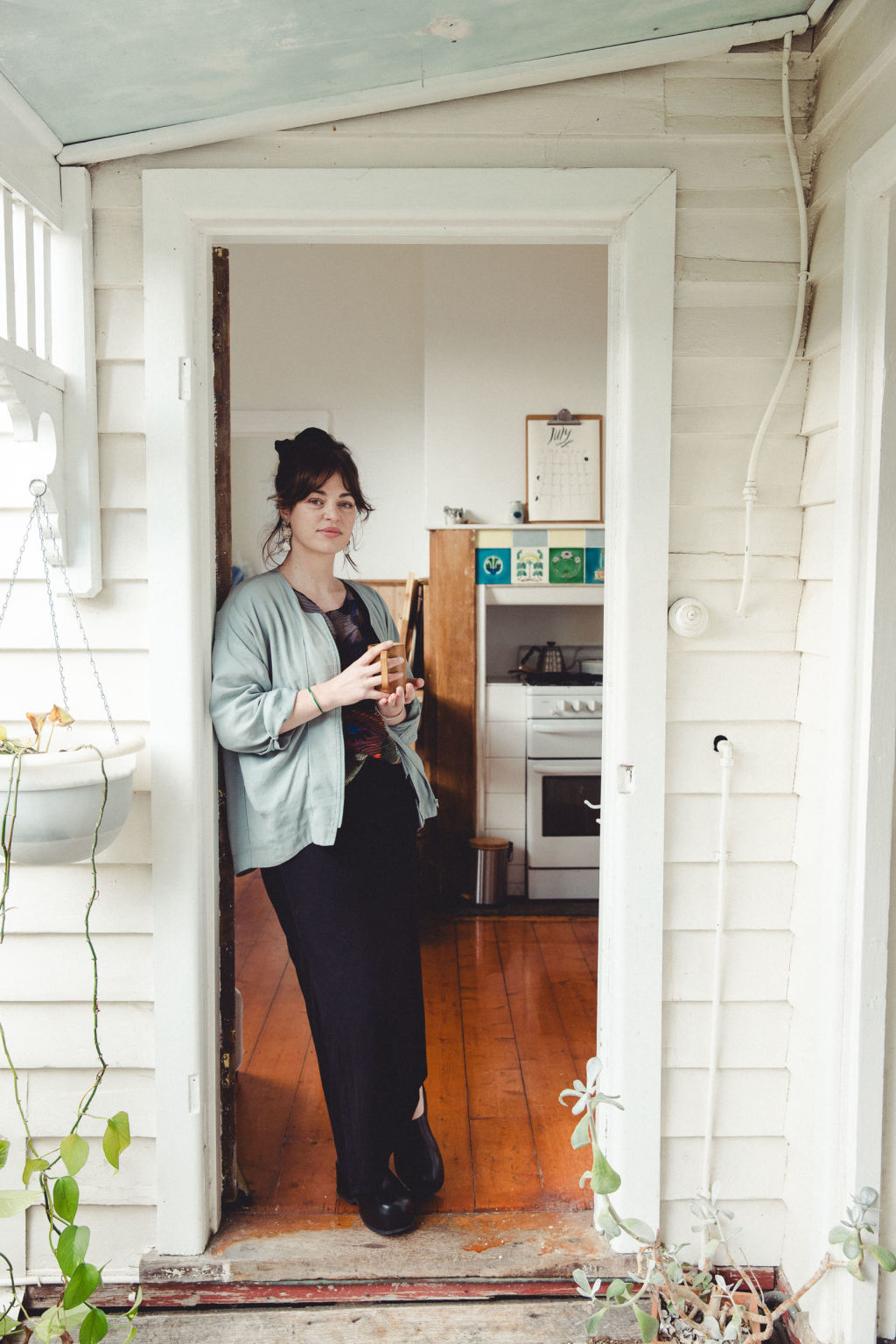
Beyond her signature woven wares, Pattle is focused on sculptural works that explore “human relationships with nature and the complexities within that relationship”. One project she’s really proud of involves adorning eucalyptus limbs in shimmering glass beads. Her inspiration came from finding a car that had crashed into a tree on her street. Shards from the broken headlights were embedded in the young eucalyptus tree, which had almost been completely knocked over. There was an immediate sense of what had happened in that moment for Pattle – and also what the tree might become as an artwork.
With help from her boyfriend, she dragged the tree home and got to work beading glass around sticks of various sizes. It took a few months to work out exactly how to do it, she says. “I quite like getting back to square one and learning how to work with new materials. But that means I’m constantly changing what I’m doing.” The result is a meeting of materials that creates balance between the urban world and the natural world. Pattle thinks of it as an armour-like second skin for the bark.
The tactile nature of Pattle’s universe is a drawcard for private collectors, as well as institutions. In 2023, a large-scale work was commissioned for Melbourne Now as part of the Vessels exhibit at the NGV’s Ian Potter Centre. Coming up, Pattle’s Lucky Stick series will be shown at the Canberra Biennial from September 27.
“I think I’ll be making forever. I’m always thinking about the next thing – what I want to make or the next project.”
See more of Pattle’s work at caropattle.com. Her vessels are stocked at Craft Victoria and the NGV Design Store, selling by commission and exhibition.
This article first appeared in Domain Review, in partnership with Broadsheet.
We recommend
We thought you might like
States
Capital Cities
Capital Cities - Rentals
Popular Areas
Allhomes
More
